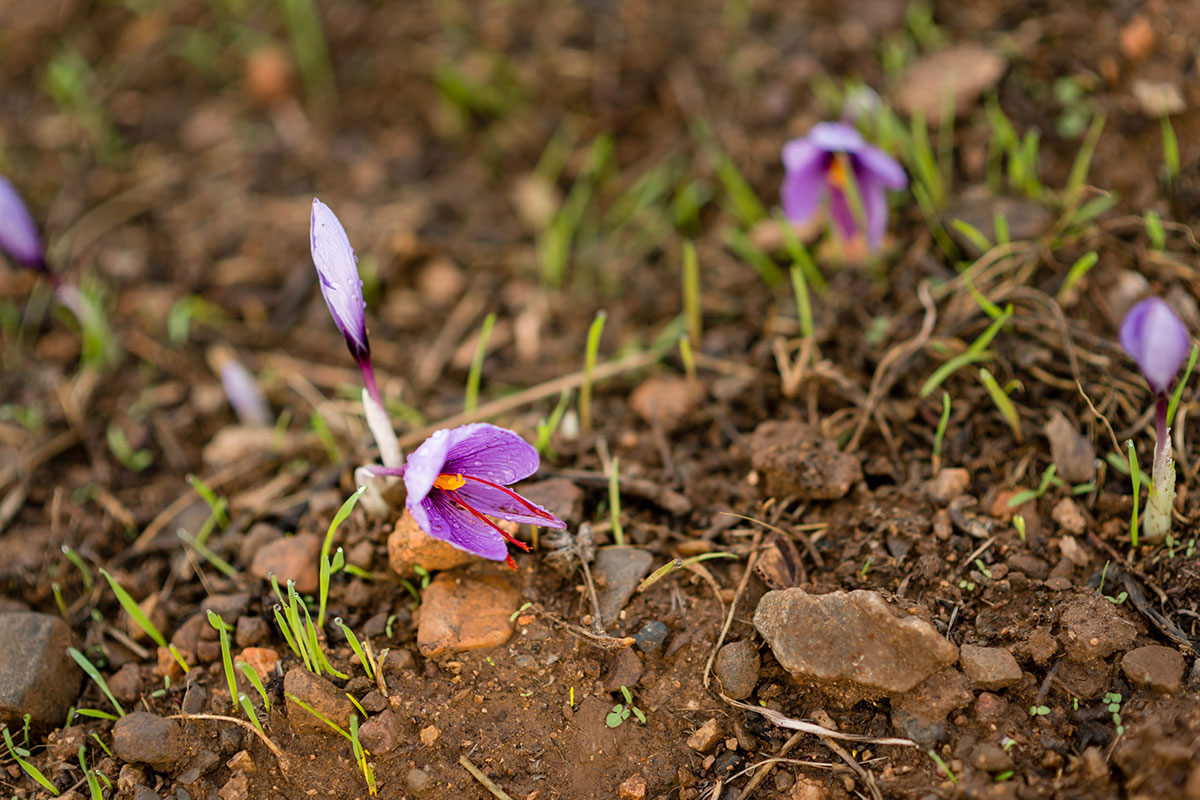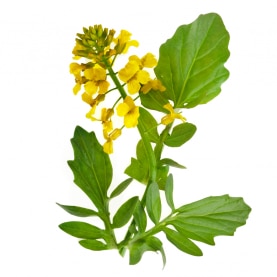Saffron
Saffron is originally from the Near and Middle East, and has long been prized as a spice, remedy, perfume and dye. Known to the Greeks and the Romans, it was neglected in Europe from the 5th century CE. It was reintroduced to Spain by the Arabs in the 10th century, and gained esteem in the cuisine of the Middle Ages and the Renaissance. Saffron is still highly sought after and the most expensive spice in the world. Some 150 000 flowers must be picked by hand to obtain one kilo of saffron.
Delaveau Pierre, 1987, Les épices, Paris : Albin Michel.
Pelt Jean-Marie, 2002, Les épices, Paris : Fayard.
Toussaint-Samat Maguelonne, 1997, Histoire naturelle et morale de la nourriture, France : Larousse.
Dynamique de la relance du safran à Mund -
https://doc.rero.ch/record/5808/files/mem_CecchiniPauchardMJ.pdf
de MJ Cecchini-Pauchard - 2006
Contribution d'une approche ethnohistorique à ...
https://doc.rero.ch/record/4480/files/1_mem_ToliviaS.pdf
de S Helfer - 2002 -
A highly sought-after spice
Saffron has a complex history with still quite a few grey areas. It is generally accepted by historians that saffron originates from West Asia, from Mesopotamia or perhaps Iran. It is recorded as having been found on the banks of the Euphrates in 2300 BCE. Yet the latest scientific research questions this origin. The saffron usually used in cooking is extracted from the domesticated crocus, Crocus sativus, the origin of which has not been clearly identified. This crocus could be the result of the intensive selection of an indigenous crocus, which originated in the eastern Mediterranean, possibly the one depicted in the Santorini murals dating from 1600-1500 BCE. Yet other species may well be its predecessors.
Be that as it may, saffron was particularly valued throughout Antiquity. It was extensively traded, firstly in Egypt, then in Greece and Rome, and was used as a seasoning when cooking. It gained a reputation of being an aphrodisiac, and was thought to have medicinal and health benefits. It was used to dye clothes and was also valued as a fragrance; the Romans used to spread it on the floor of their thermal baths, for example.
With the upheaval of the end of the Roman Empire, this spice disappeared from Europe. It returned with the Arabs via Spain, where it was cultivated in the 10th century. In the 14th century, Europeans were in the grip of a genuine spice frenzy. Trade in saffron was rekindled with the Orient, and in turn several European countries set about cultivating this plant, as it was a particularly lucrative market. At the time, Europeans thought saffron had health benefits and made generous use of it in their cuisine, often blended with other spices. So beef, which was considered as ‘cold’ in medical understanding at that time, had to be accompanied by a ‘hot’ sauce, made from saffron for example.
From the 17th century onward, the craze for this spice died down, yet did not entirely disappear. There is currently renewed interest in the cultivation of saffron; Mund, in the Swiss canton of Valais, has revived it in the past few decades.
Painstaking work
Crocus sativus is a bulb plant which grows to 15 to 20 cm in height. It likes light, well-drained soil which lets rainwater filter through. This plant needs sunshine, but withstands rain, especially spring rain. It resists the cold relatively well, adapts to chalky, sandy or stony soils and also grows at altitude. It has to be protected from predators such as field mice and voles, which are particularly fond of the bulbs.
The crocuses start flowering in October. The flowers are picked as soon as they open, early in the morning. This is a delicate stage and everything must be done by hand. Such a highly labour-intensive harvest explains why this spice costs so much. Once the flowers have been picked, trimming begins, which involves detaching the three red stigma and cutting off their base. These threads are then dried for approximately three days.
Between 100 000 and 150 000 flowers are required to obtain one kilo of saffron.
Cooking with saffron
Saffron is used in Arabian, Indian, Iranian and Central Asian cuisine. In Europe, it features in a large number of recipes and specialities, such as paella in Spain, risotto alla milanese in Italy and bouillabaisse in southern France.
Counterfeits
As saffron is expensive, there is a great temptation for fraud, especially when saffron is in powder form, as it can easily be blended with turmeric or other powders. A larger quantity of styles (the base of the stigma) can be added to saffron, which does not count as counterfeiting as such, but which nonetheless reduces the quality of the saffron.
Delaveau, Pierre, 1987. Les épices. Paris : Albin Michel.
Cecchini-Pauchard, Marie-José, 2006. Dynamique de la relance du safran à Mund (Alpes valaisannes) : approche ethnographique d’un produit du terroir [en ligne]. Mémoire de licence. [Consulté le 19.04.16]. Disponible à l’adresse : https://doc.rero.ch/record/5808/files/mem_CecchiniPauchardMJ.pdf
Helfer, Sandrine, 2002. Contribution d'une approche ethnohistorique à la relance du safran dans le Quercy [en ligne]. Mémoire de licence. [Consulté le 3 avril 2016]. Disponible à l’adresse : https://doc.rero.ch/record/4480/files/1_mem_ToliviaS.pdf
Pelt, Jean-Marie, 2002. Les épices. Paris : Fayard.
Toussaint-Samat, Maguelonne, 1997. Histoire naturelle et morale de la nourriture. Paris : Larousse.







